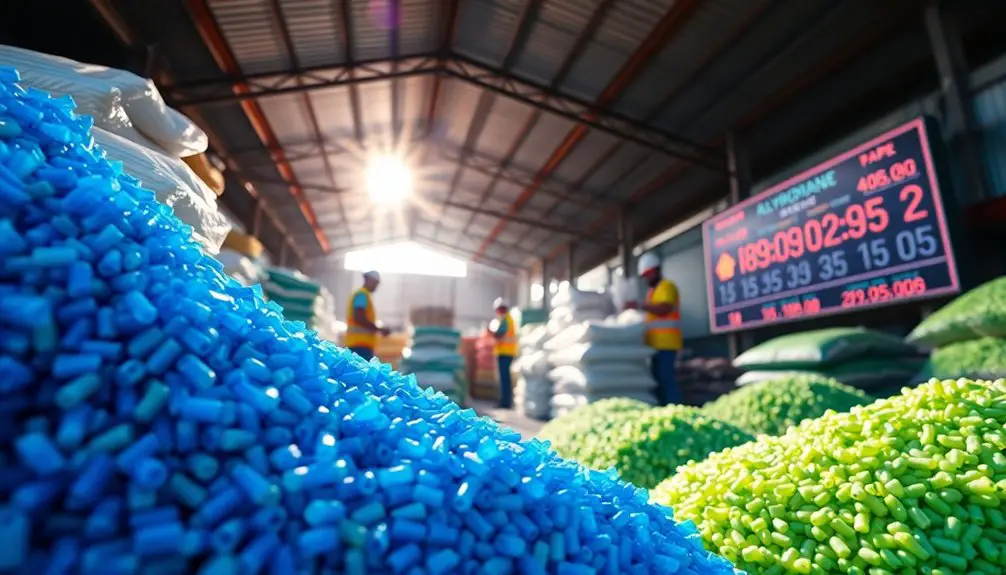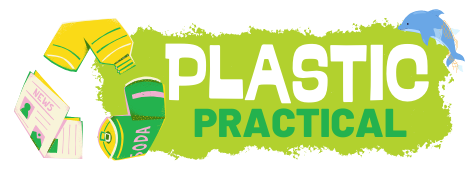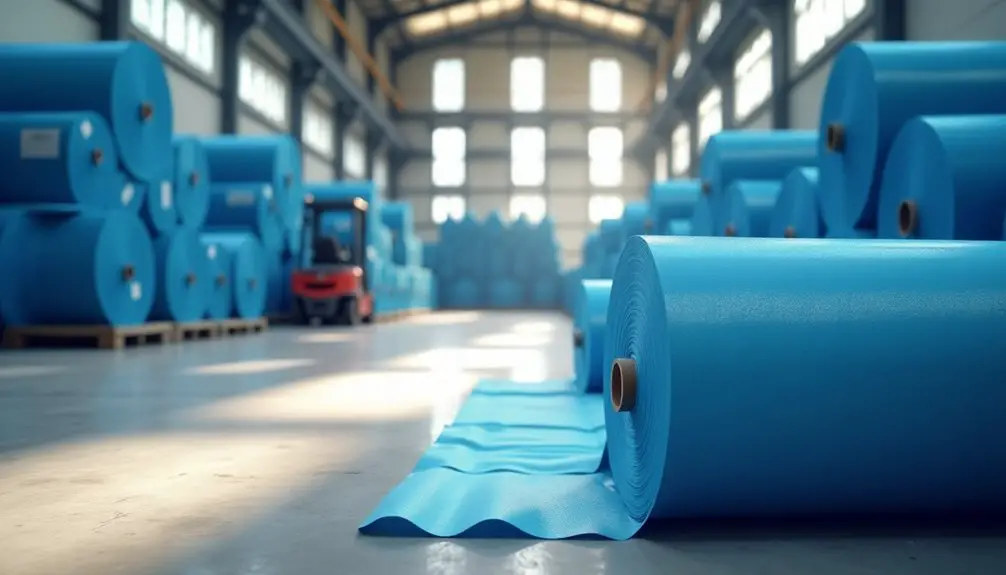To source polypropylene effectively, start by understanding the two main types: homopolymer and copolymer. Identify key suppliers like GAR Plastics and Nexeo Plastics, which offer various forms to suit your needs. Consider your specific requirements, such as customization options and compliance with quality standards. Implement strategies like dual-sourcing to minimize supply chain risks and keep an eye on pricing trends to negotiate better deals. By aligning with certified manufacturers, you'll ensure product quality and adherence to regulations. If you're curious about the latest market trends and sourcing insights, there's much more to explore.
Key Takeaways
- Identify your specific needs, including the type of polypropylene (homopolymer or copolymer) and desired form (sheets, rods, etc.).
- Engage reputable suppliers like GAR Plastics or Plastics General for tailored solutions and compliance with industry standards.
- Consider dual-sourcing strategies to minimize supply chain risks and ensure consistent availability of materials.
- Monitor market trends and pricing fluctuations to negotiate better deals and anticipate potential supply challenges.
- Ensure selected manufacturers adhere to quality certifications, such as ISO 9001:2015, for reliable product quality and compliance.
Understanding Polypropylene Types
Understanding the different types of polypropylene (PP) is essential for selecting the right material for your project. Polypropylene is available in a variety of forms, including sheets, rods, tubes, and films, making it incredibly versatile across industries such as automotive, medical, and construction.
You'll find that PP can be categorized into two main types: homopolymer and copolymer. Each type offers distinct advantages; homopolymers are typically more rigid, while copolymers provide enhanced flexibility and toughness.
When choosing polypropylene for your application, consider its unique properties. This material is known for its durability, moisture resistance, and high melting point, making it suitable for demanding environments.
It's also important to note that polypropylene products can be customized to meet specific requirements, ensuring you get exactly what you need for your project.
Additionally, compliance with industry standards, such as FDA and USDA certifications, is crucial when using polypropylene in food and medical applications.
Polypropylene is also recyclable, with a recycling code 5, which is gaining acceptance in local guidelines and can be a significant factor in material selection.
Key Suppliers and Manufacturers
When seeking polypropylene, it pays to connect with reputable suppliers and manufacturers who can meet your specific needs. Many key suppliers offer a variety of polypropylene products and services tailored for different industries.
Here are some notable names to consider:
- GAR Plastics: Specializes in recycled resins, serving applications like food packaging and automotive dunnage.
- Washington Penn Plastic Co., Inc.: Known for its ISO/TS16949 certified polypropylene resins and color concentrates.
- Plastics General: Offers both virgin and recycled polypropylene resins, catering to aerospace and medical industries.
Additionally, Nexeo Plastics provides a wide range of thermoplastic polymers, including polypropylene, with services in transportation and supply chain management.
Industrial Plastic Supply, Inc. focuses on innovative formulations like self-lubricating and conductive glass-filled polypropylene.
Lastly, PolyClean Technologies, Inc. emphasizes recycling and purification of polymer materials, including polypropylene, supporting sustainability efforts across various applications. Notably, when sourcing polypropylene, it is essential to consider circular economy approaches that minimize waste and optimize material reuse.
Sourcing Strategies and Tips

Finding the right sourcing strategies for polypropylene can significantly impact your project's success. Start by assessing your specific requirements, such as the desired form—sheets, rods, or tubes—and any compliance needs. This clarity will guide your sourcing decisions effectively.
Engage with established suppliers like GAR Plastics or Washington Penn Plastic Co. They specialize in providing both virgin and recycled polypropylene resins tailored for various applications.
Don't hesitate to ask about their expertise in custom colors and formulations, as this can help you achieve the desired performance characteristics for your project.
Consider implementing dual-sourcing strategies to mitigate supply chain risks. This approach ensures steady availability, especially during fluctuating market conditions or potential disruptions.
Regularly monitor pricing trends and market insights to stay informed. This knowledge allows you to negotiate better rates with suppliers based on current market conditions.
Compliance and Quality Standards
Ensuring compliance and adherence to quality standards is vital when sourcing polypropylene. You need to partner with certified manufacturers that meet various industry regulations. Many suppliers comply with standards set by organizations like the FDA, USDA, NSF, REACH, and RoHS, which guarantee that the products are safe and environmentally friendly.
Here are some key points to consider:
- Look for certifications such as ISO 9001:2015, which indicate a commitment to quality management and continuous improvement.
- Check if the supplier follows NAFTA standards to facilitate trade and ensure compliance with regional requirements.
- Investigate the availability of recycled polypropylene products, reflecting a focus on sustainability in sourcing practices.
Stringent quality control measures are essential, as they ensure the purity and consistency of polypropylene materials. This is crucial across various applications, from packaging to automotive components.
When you prioritize compliance and quality management, you'll not only enhance your sourcing strategy but also align with industry best practices, ensuring reliability and safety in your supply chain.
Market Trends and Insights

The polypropylene market is poised for significant growth, with a projected annual increase of around 5% from 2021 to 2026. This upward trend is largely driven by the rising demand in the automotive and packaging sectors, which often rely on single-use plastics that contribute to plastic pollution.
As you explore your sourcing options, keep an eye on the evolving market trends that could impact availability and pricing.
In 2023, the average price of polypropylene reached $1,200 per ton, but it's important to note that prices can fluctuate significantly due to crude oil prices and geopolitical tensions. This volatility underscores the need for strategic planning in procurement.
With an expected incremental spend of USD 28.09 billion during the forecast period, the market's robust growth potential offers plenty of opportunities for savvy buyers.
Moreover, key suppliers like LyondellBasell Industries BV and Braskem SA contribute to a competitive landscape, allowing you to compare offerings.
However, stricter regulatory compliance regarding environmental standards means you'll need to stay informed and adaptable. Keeping abreast of these market trends will help you make informed decisions about sourcing polypropylene effectively.
Frequently Asked Questions
How Is Polypropylene Sourced?
You source polypropylene from various manufacturers and suppliers, focusing on compliance with industry standards. Consider dual-sourcing and customization options to meet your specific needs while ensuring quality and reducing risks in procurement strategies.
Is Polypropylene Readily Available?
Yes, polypropylene's readily available in the market today. With major suppliers and consistent production, you can find both virgin and recycled options that meet your needs, ensuring quality and compliance with industry standards.
Where Do You Get Polypropylene From?
You can get polypropylene from major manufacturers like LyondellBasell and Braskem, or suppliers like U.S. Plastic Corp. and GAR Plastics. They offer both virgin and recycled options for your specific needs.
What Is the Demand for Polypropylene?
The demand for polypropylene's growing, projected to rise about 5% annually until 2026. Its lightweight, moisture-resistant properties make it popular in automotive, packaging, and other industries, driving significant investment and market expansion.

